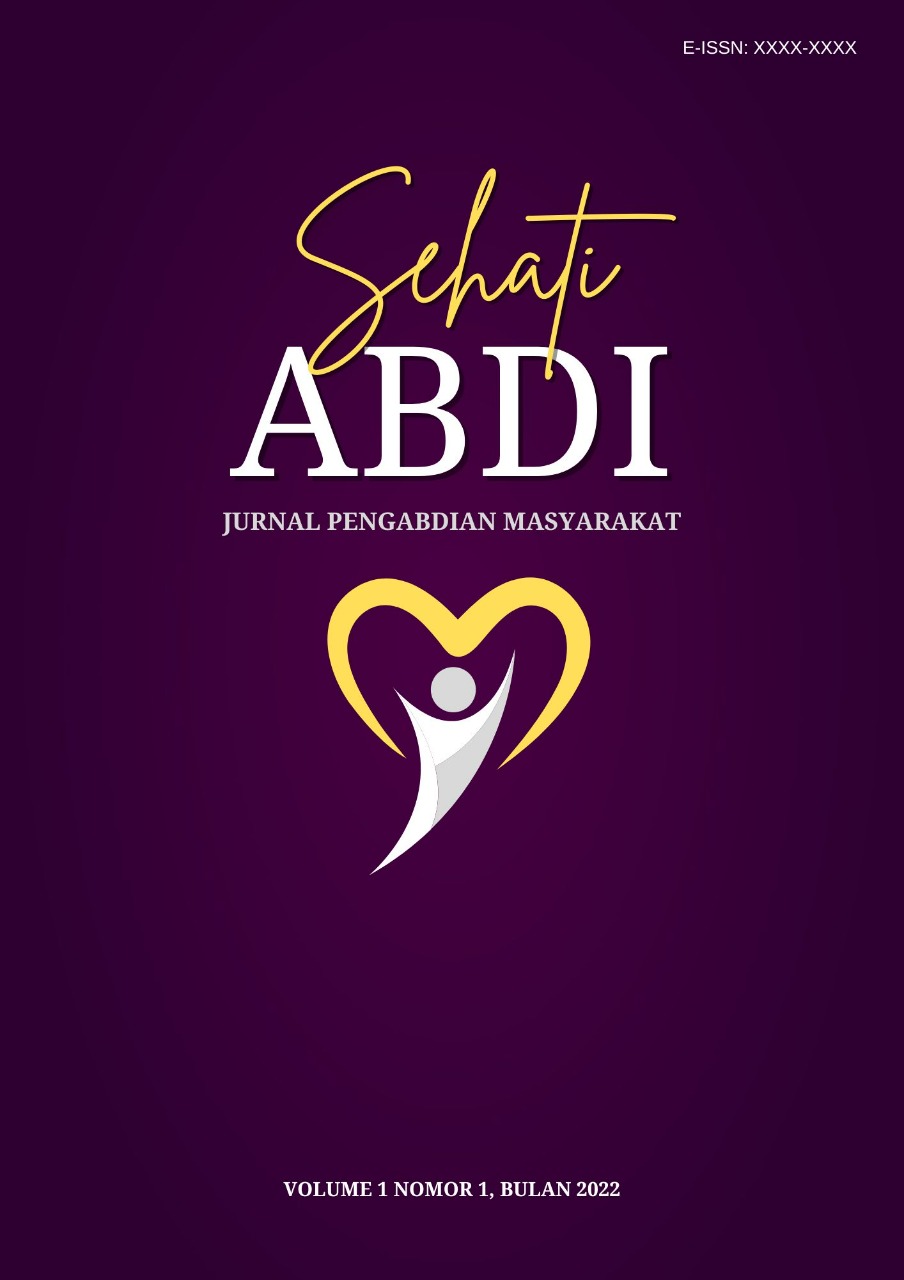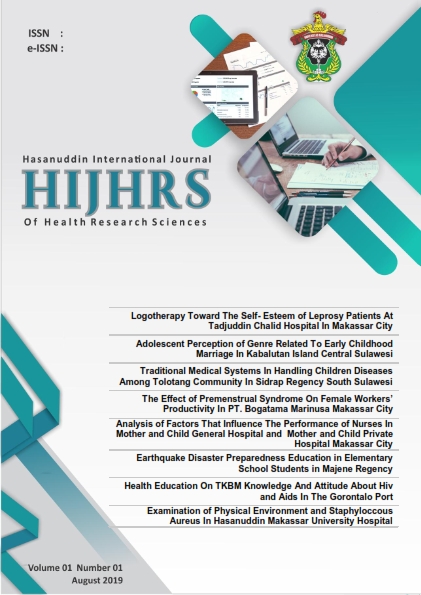CONTENT OF NUTRITIONAL HONEY Moringa Oleifera NUTRITION AND GLYCEMIC INDEX VALUE ON PREGNANCY RATS (RATTUS NORVEGICUS)
Abstrak
Honey has been widely used as a substitute for sugar, especially during pregnancy that requires food intake with a low glycemic index (GI). The aim of this study to assess the nutritional content and IG of honey Moringa in pregnant wistar rats. The research method is experimental research lab to design Randomized Post Test Only Control Group Design on GI and Proximate analysis and phytochemical analysis of the nutrient content of Moringa honey. The research sample used 24 pregnancy rats into 1 control group (0.22ml) and 3 honey intervention group (0.27ml) consisting 6 animals each. Intervention in 14 days with measurement GI on gestation day 14. Analysis use correlation method AUC to show value of GI and statistical analysis using the One-Way ANOVA, followed by post hoc test analysis test methods LSD. The results study of carbohydrate content honey plus Moringa do not reach SNI, protein and fat reach SNI, for carbohydrate, protein and fat content of Moringa honey reach SNI, while the flavonoid content be higher in honey and polyphenol content is higher in Moringa honey. The results animal studies of GI honey (61), honey plus moringa (62.07) and honey moringa (65.05) are medium category (55-70). The results significant differences in food group reference to the intervention group. The results of post hoc LSD was no significant difference between the natural honey (105.17), Honey plus moringa (126.50) and honey moringa (132.83) in comparison Glycemic value. Honey, honey plus moringa and honey moringa can control the GI in pregnancy
Referensi
Almeida-Muradian L.B.de., Stramm K.M., Horita A., Barth O.M., Freitas A. da S. de. & Estevinho L.M. (2013). Comparative Study of The Physicochemical and Palynological Characteristics of Honey from Melipona Subnitida and Apis mellifera. International Journal of Food Science & Technology, 48(8):1698-1706
Alvarez-Suarez J.M., Tulipani S., Díaz D., Estevez Y., Romandini S., Giampieri F., Damiani E., Astolfi P., Bompadre S. & Battino M. (2010). Antioxidant and Antimicrobial Capacity of Several Monofloral Cuban Honeys and Their Correlation with Color, Polyphenol Content and other Chemical Compounds. Food Chem. Toxicol, 48(8-9):2490–2499.
Bertoncelj J., Doberšek U., Korošec M. & Golob T. (2007). Evaluation of The Phenolic Content, Antioxidant Activity and Colour of Slovenian Honey. Food Chemistry, 105(2):822–828.
Bhattacharya S., Manna P., Gachhui R. & Sil P.C. (2013). D-Saccharic acid 1, 4-lactone protects diabetic rat kidney by ameliorating hyperglycemia-mediated oxidative stress and renal inflammatory cytokines via NF-κB and PKC signaling. Toxicology and applied pharmacology, 267(1):16-29.
Cimpoiu C., Hosu A., Miclaus V. & Puscas A. (2013). Determination of the floral origin of some Romanian honeys on the basis of physical and biochemical properties. Spectrochim Acta A Mol Biomol Spectrosc, 100:149–154.
Du H., van der A D.L., van Bakel M.M.E., van der Kallen C.J.H., Blaak E.E., van Greevenbroek M.M.J., Jansen E.H.J.M., Nijpels G., Stehouwer C.D.A., Dekker J.M. & Feskens E.J.M. (2008). Glycemic index and glycemic load in relation to food and nutrient intake and metabolic risk factors in a Dutch population. The American Journal of clinical nutrition, 87(3):655–661.
Erejuwa O.O., Sulaiman S.A. & Wahab M.S.A. (2012). Fructose Might Contribute to the Hypoglycemic Effect of Honey. Molecules, 17(2):1900–1915.
Escuredo O., Seijo M.C., Salvador J. & González-Martín M.I. (2013). Near infrared spectroscopy for prediction of antioxidant compounds in the honey. Food Chemistry, 141(4):3409–3414.
Eteraf-Oskouei T. & Najafi M. (2013). Traditional and Modern Uses of Natural Honey in Human Diseases: A Review. Iranian Journal of basic medical sciences, 16(6):731–742.
Eyer M., Neumann P. & Dietemann V. (2016). A Look into the Cell: Honey Storage in Honey Bees, Apis mellifera. PLoS One, 11(8):1-20.
Ferreira I.C.F.R., Aires E., Barreira J.C.M. & Estevinho L.M. (2009). Antioxidant activity of Portuguese honey samples: Different contributions of the entire honey and phenolic extract. Food Chemistry, 114(4):1438-1443
Foster-Powell K., Holt S.H.A. & Brand-Miller J.C. (2002). International table of glycemic index and glycemic load values: 2002. The American journal of clinical nutrition, 76(1):5–56.
Guariguata L., Whiting D.R., Hambleton I., Beagley J., Linnenkamp U. & Shaw J.E. (2014). Global estimates of diabetes prevalence for 2013 and projections for 2035. Diabetes research and clinical Practice, 103(2):137–149.
IDF. (2013). IDF Diabetes Atlas Sixth Edition. Brussel:International Diabetes Federation.
IDF. (2017). IDF Diabetes Atlas Eight Edition. Brussel:International Diabetes Federation.
Kemenkes RI. (2013). Riset Kesehatan Dasar; RISKESDAS. Jakarta:Balitbang Kementerian Kesehatan Republik Indonesia.
Kemenkes RI. (2018). Riset Kesehatan Dasar; RISKESDAS. Jakarta:Balitbang Kementerian Kesehatan Republik Indonesia.
Khan A.R., Ali W., Fiaz H., Yasin K.A., Khan R.A.W., Islam Z.U. & Ali G. (2018). The Effect of Honey-Antioxidants on Blood Glycaemia in Normal Healthy Human Subjects. Pakistan Journal of Life & Social Sciences, 16(1)42-47.
Mohamed M., Sirajudeen K., Swamy M., Yaacob N.S. & Sulaiman S.A. (2009). Studies on the antioxidant properties of Tualang honey of Malaysia. African Journal of Traditional, Complementary and Alternatif Medicines, 7(1):59–63.
Moniruzzaman M., Yung An C., Rao P.V., Hawlader M.N.I., Azlan S.A.B.M., Sulaiman S.A. & Gan S.H. (2014). Identification of Phenolic Acids and Flavonoids in Monofloral Honey from Bangladesh by High Performance Liquid Chromatography: Determination of Antioxidant Capacity. BioMed Research International, 2014.
Moses R. G., Barker M., Winter M., Petocz P. & Brand-Miller J. C.(2009). Can a low–glycemic index diet reduce the need for insulin in gestational diabetes mellitus?: A randomized trial. Diabetes care, 32(6):996-1000.
Natzir R., Rahman S. & Peter K. (2014). Pengaruh Antioksidan Madu Dorsata dan Madu Trigona terhadap Penghambatan Oksidasi LDL pada Mencit Hiperkolesterolemia. JST Kesehatan, 4(4):377-384.
Javier P., Paula C. & Nimia M. (2016). Phenolic content of honey reduces in vitro starch digestibility. Czech Journal of Food Sciences, 34(3):217-223.
Perkins J.M., Dunn J.P. & Jagasia S.M. (2007). Perspectives in Gestational Diabetes Mellitus: A Review of Screening, Diagnosis, and Treatment. Clinical Diabetes, 25(2):57–62.
Potenza M.A., Marasciulo F.L., Tarquinio M., Tiravanti E., Colantuono G., Federici A. & Montagnani M.(2007). EGCG, a green tea polyphenol, improves endothelial function and insulin sensitivity, reduces blood pressure, and protects against myocardial I/R injury in SHR. American Journal of Physiology-Endocrinology and Metabolism, 292(5):1378-1387.
Ramachandran A., Snehalatha C., Shetty A.S. & Nanditha A. (2012). Trends in prevalence of diabetes in Asian countries. World journal of diabetes, 3(6):110–117.
Sheard N.F., Clark N.G., Brand-Miller J.C., Franz M.J., Pi-Sunyer F.X., Mayer-Davis E., Kulkarni K. & Geil P. (2004). Dietary carbohydrate (amount and type) in the prevention and management of diabetes: a statement by the american diabetes association. Diabetes Care, 27(9):2266–2271.
Soewondo P. & Pramono L.A. (2011). Prevalence, characteristics, and predictors of pre-diabetes in Indonesia. Medical Journal of Indonesia, 20(4):283–94.
Sreelatha S. & Padma P.R. (2009). Antioxidant activity and total phenolic content of Moringa oleifera leaves in two stages of maturity. Plant foods for human nutrition, 64(4), 303-311.
Standar Nasional Indonesia. (2013). Madu. Jakarta:Badan Standarisasi Nasional Indonesia.
Steve I.O. (2015). Determination of Nutrient Compositions, Glyceamic Index and Ant-Diabetic Potentials of Multi-Plant Based Functional Foods in Rats. Journal of Food and Pharmaceutical Sciences, 3(3):55-63.
Tende J.A., Ezekiel I., Dikko A.A.U., Goji A.D.T. (2011). Effect of Ethanolic Leaves Extract of Moringa oleifera on Blood Glucose Levels of Streptozocin-Induced Diabetics and Normoglycemic Wistar Rats. British Journal of Pharmacology and Toxicology, 2(1): 1-4.
Thannoun A.M. (2010). Blood Glucose Response And Glycemic Index of Diets Containing Different Sources of Carbohydrate in Healthy Rats. Mesopotamia Journal of Agriculture. 38(1):24-34.
Tim Karya Tani Mandiri. (2010). Pedoman Budidaya Beternak Lebah Madu. Bandung:Nuansa Aulia.
WHO. (2013). Global Action Plan for the Prevention and Control of NCDs 2013-2020. Geneva: Who Health Organization.



